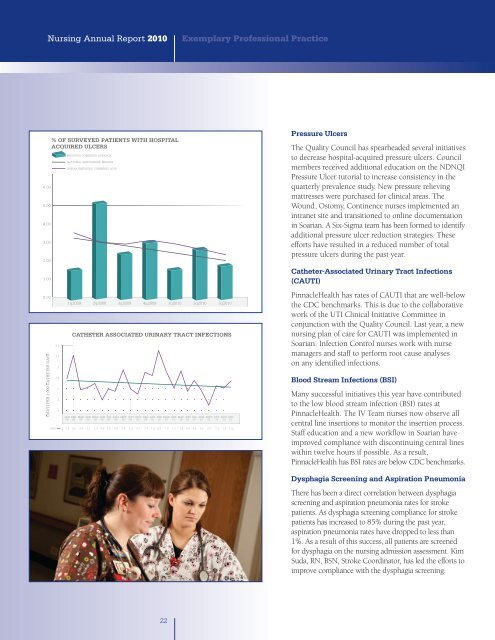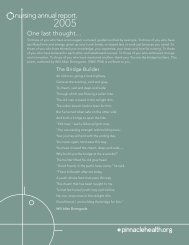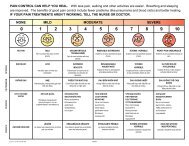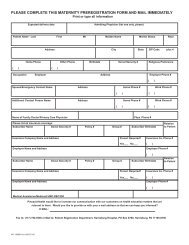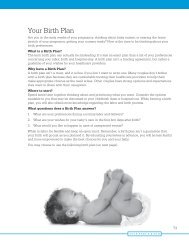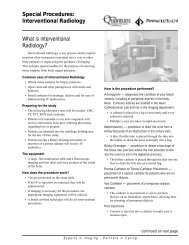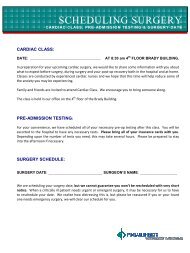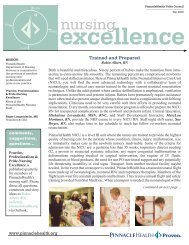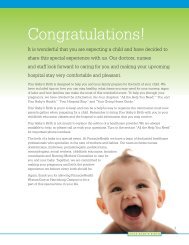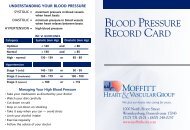2010 Nursing ANNUAL v4d - PinnacleHealth
2010 Nursing ANNUAL v4d - PinnacleHealth
2010 Nursing ANNUAL v4d - PinnacleHealth
- No tags were found...
You also want an ePaper? Increase the reach of your titles
YUMPU automatically turns print PDFs into web optimized ePapers that Google loves.
<strong>Nursing</strong> Annual Report <strong>2010</strong>Exemplary Professional Practice% OF SURVEYED PATIENTS WITH HOSPITALACQUIRED ULCERSPressure UlcersThe Quality Council has spearheaded several initiativesto decrease hospital-acquired pressure ulcers. Councilmembers received additional education on the NDNQIPressure Ulcer tutorial to increase consistency in thequarterly prevalence study. New pressure relievingmattresses were purchased for clinical areas. TheWound, Ostomy, Continence nurses implemented anintranet site and transitioned to online documentationin Soarian. A Six-Sigma team has been formed to identifyadditional pressure ulcer reduction strategies. Theseefforts have resulted in a reduced number of totalpressure ulcers during the past year.CATHETER ASSOCIATED URINARY TRACT INFECTIONSCatheter-Associated Urinary Tract Infections(CAUTI)<strong>PinnacleHealth</strong> has rates of CAUTI that are well-belowthe CDC benchmarks. This is due to the collaborativework of the UTI Clinical Initiative Committee inconjunction with the Quality Council. Last year, a newnursing plan of care for CAUTI was implemented inSoarian. Infection Control nurses work with nursemanagers and staff to perform root cause analyseson any identified infections.Blood Stream Infections (BSI)Many successful initiatives this year have contributedto the low blood stream infection (BSI) rates at<strong>PinnacleHealth</strong>. The IV Team nurses now observe allcentral line insertions to monitor the insertion process.Staff education and a new workflow in Soarian haveimproved compliance with discontinuing central lineswithin twelve hours if possible. As a result,<strong>PinnacleHealth</strong> has BSI rates are below CDC benchmarks.Dysphagia Screening and Aspiration PneumoniaThere has been a direct correlation between dysphagiascreening and aspiration pneumonia rates for strokepatients. As dysphagia screening compliance for strokepatients has increased to 85% during the past year,aspiration pneumonia rates have dropped to less than1%. As a result of this success, all patients are screenedfor dysphagia on the nursing admission assessment. KimSuda, RN, BSN, Stroke Coordinator, has led the efforts toimprove compliance with the dysphagia screening.22


